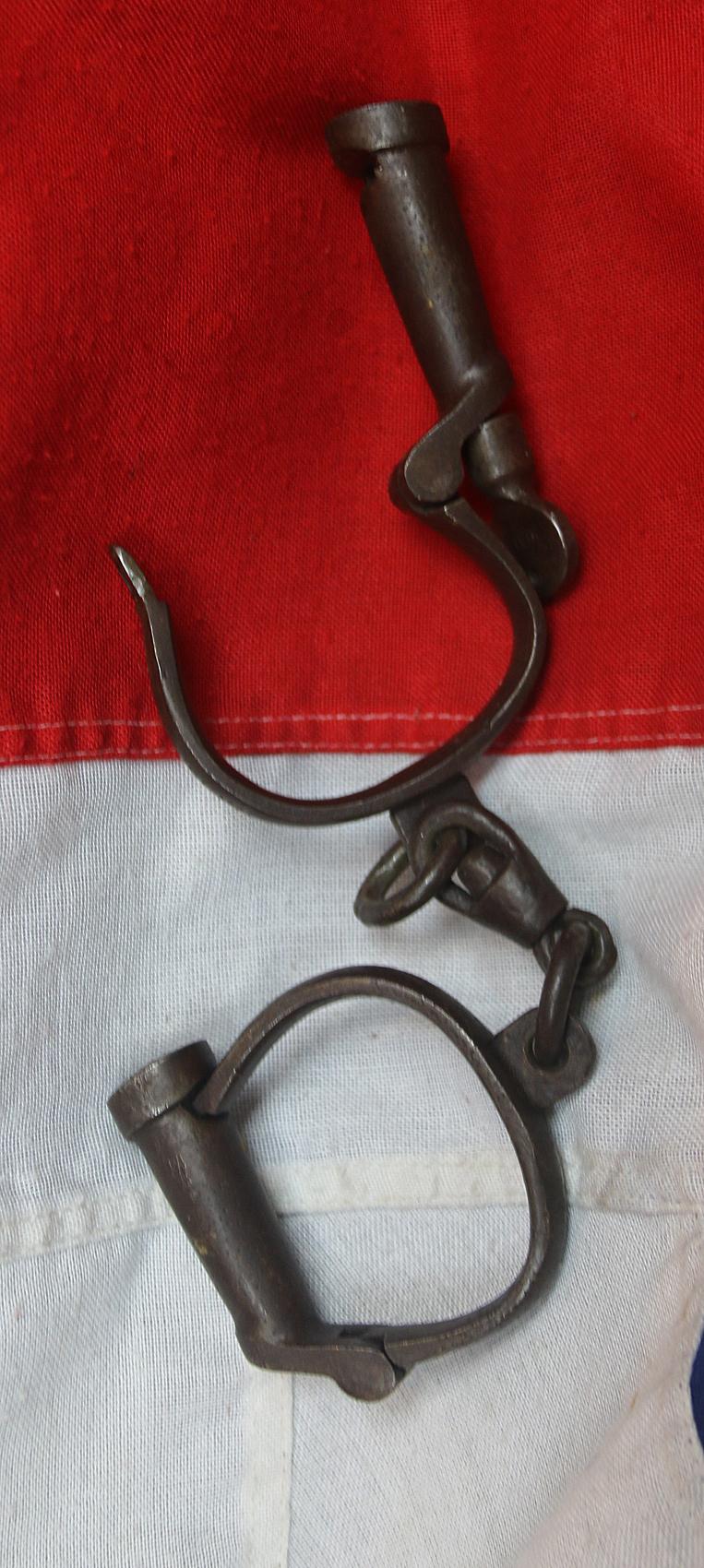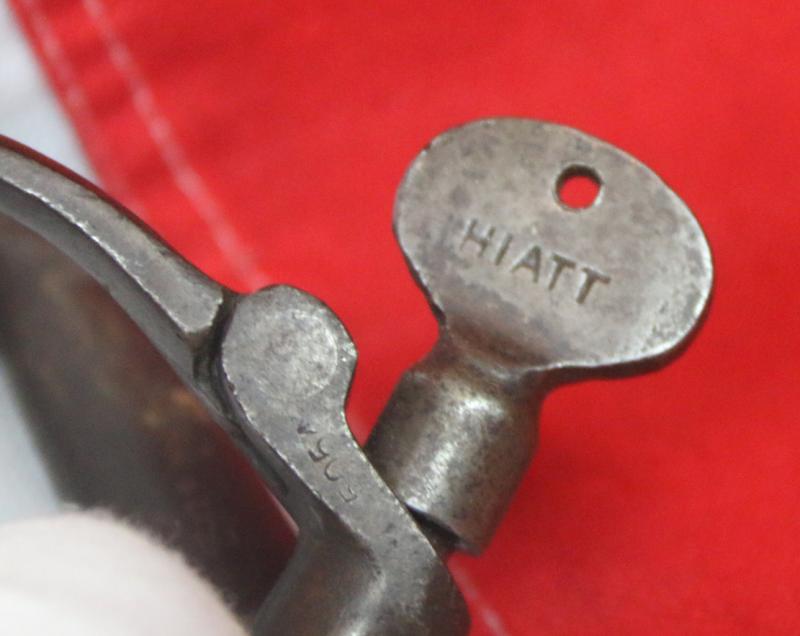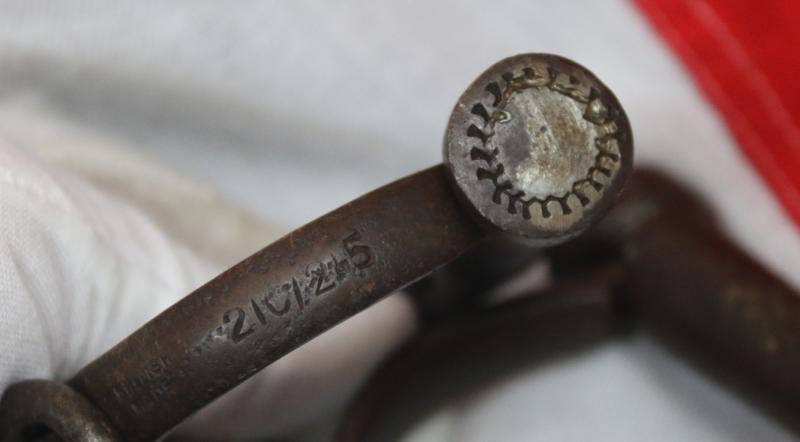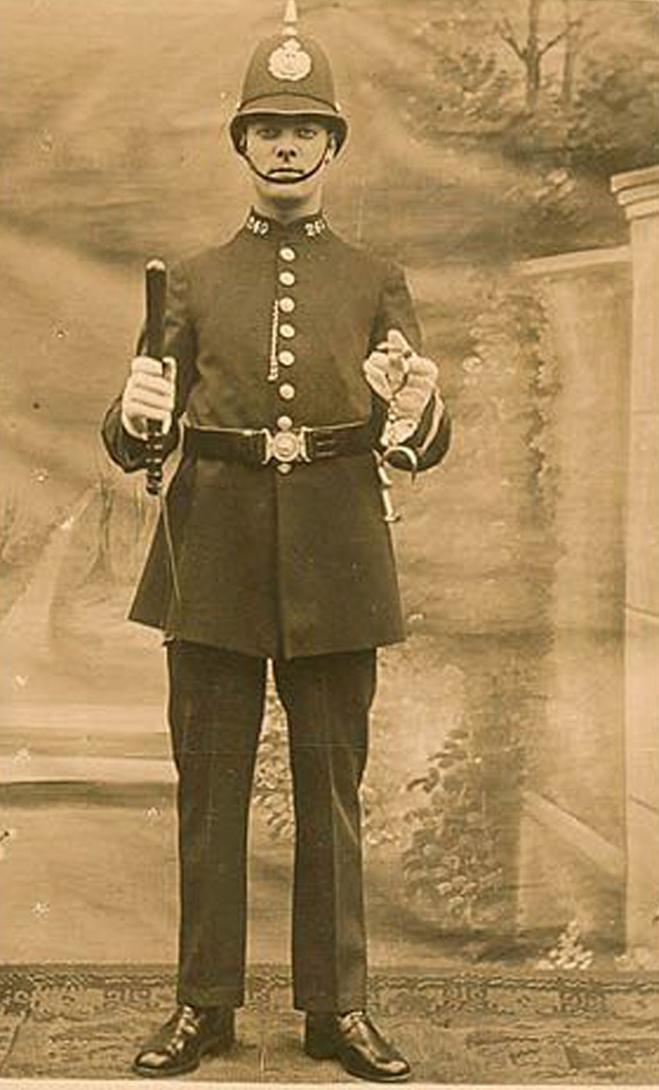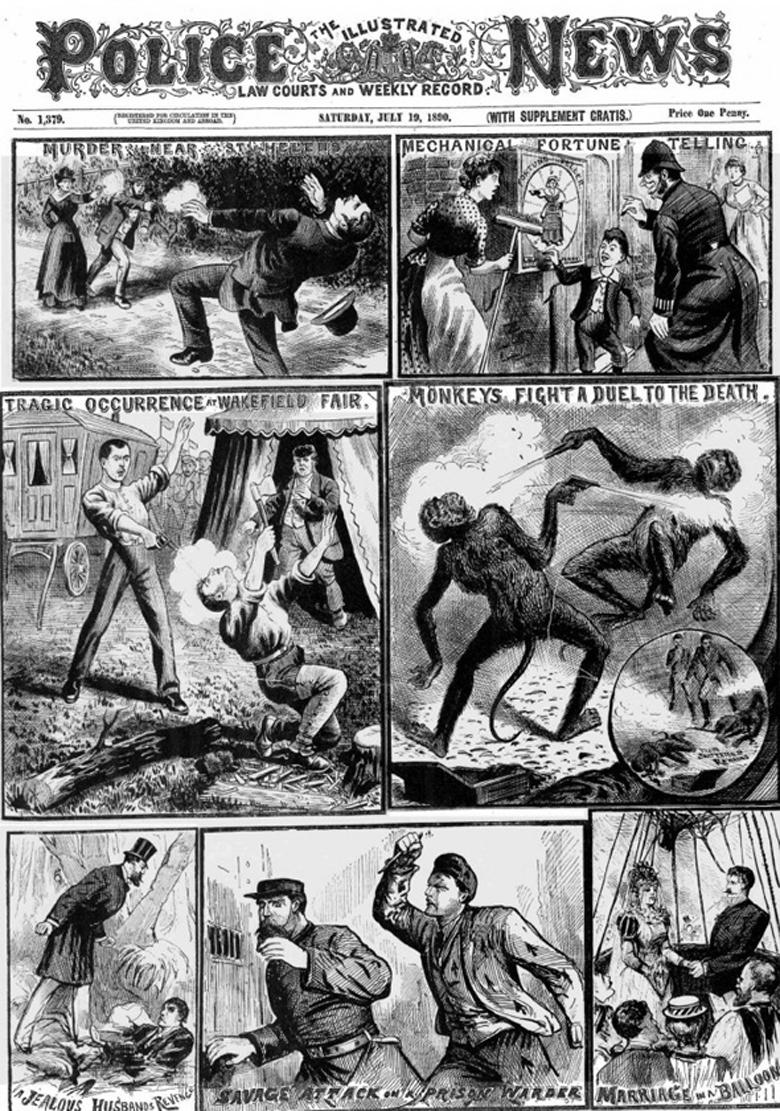Victorian Police 'Jack the Ripper' Era Type Handcuffs or 'Derby's' & Original Oval Flat Key
Good flattened head key type, with board of ordnance broad arrow stamp and serial number.
The type as was made and first used in the early Victorian era from the very beginnings of the British Police service, and on well into the next century. Excellent working order early flat key type. A good and fine condition pair of original 'Derby' cuffs used by the 'Bobbies' or 'Peelers', with the traditional rotating spiral key action.
They are also the very type that were used, and as can be seen, in all the old films of the Whitechapel Murders, and Sherlock Holmes' adventures in the gloomy London Fog.
Originally handcuffs were made of a large wooden toggle with a loop of cord, which was slipped over a prisoner’s wrists and twisted. Manufacturers Hiatt and Company, founded in Birmingham in 1780, developed a new patent for restraints, which became standard issue when the Metropolitan Police was created in 1829.
In 1818 Thomas Griffin Hiatt appears in the Wrightson Directory for the first time as a manufacturer of felon's irons and gate locks, located on Moor St. in Birmingham. Some time in the next few years Hiatt moved around the corner to 26 Masshouse Lane, where he is located in the next edition of the Wrightson's Birmingham directory as a manufacturer of felon's irons, gate lock, handcuffs, horse and dog collars. The Hiatt Company remained at the 26 Masshouse Lane address until the premises were destroyed by the World War II German bombing in 1941.
The Whitechapel murders were committed in or near the largely impoverished Whitechapel district in the East End of London between 3 April 1888 and 13 February 1891. At various points some or all of these eleven unsolved murders of women have been ascribed to the notorious unidentified serial killer known as Jack the Ripper.
The murderer or murderers were never identified and the cases remain unsolved. Sensational reportage and the mystery surrounding the identity of the killer or killers fed the development of the character "Jack the Ripper", who was blamed for all or most of the murders. Hundreds of books and articles discuss the Whitechapel murders, and they feature in novels, short stories, comic books, television shows, and films of multiple genres.
The poor of the East End had long been ignored by affluent society, but the nature of the Whitechapel murders and of the victims' impoverished lifestyles drew national attention to their living conditions. The murders galvanised public opinion against the overcrowded, unsanitary slums of the East End, and led to demands for reform. On 24 September 1888, George Bernard Shaw commented sarcastically on the media's sudden concern with social justice in a letter to The Star newspaper:
Code: 25079
220.00 GBP


